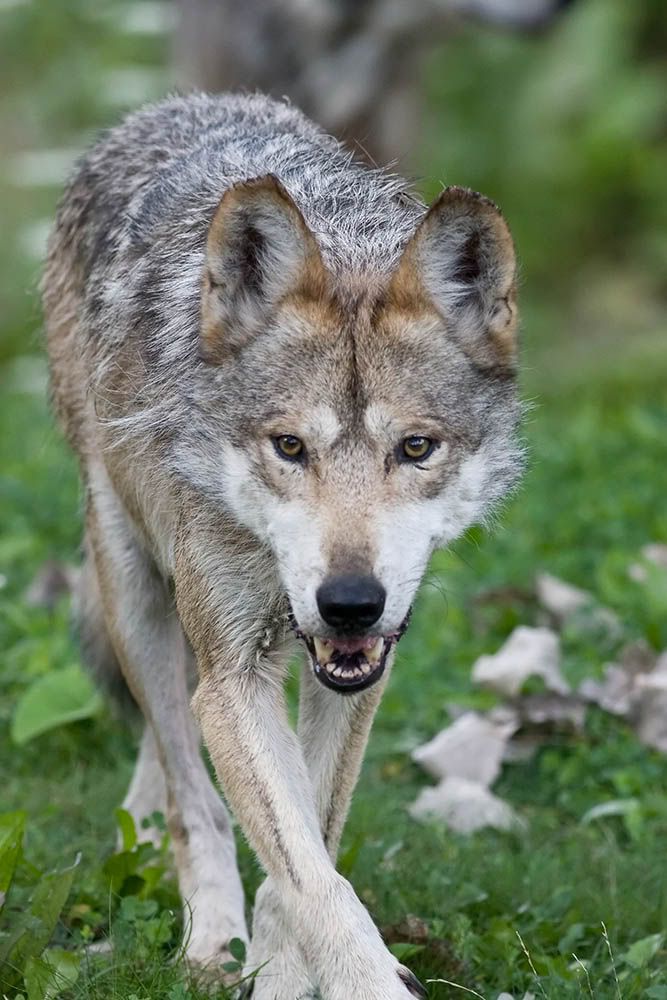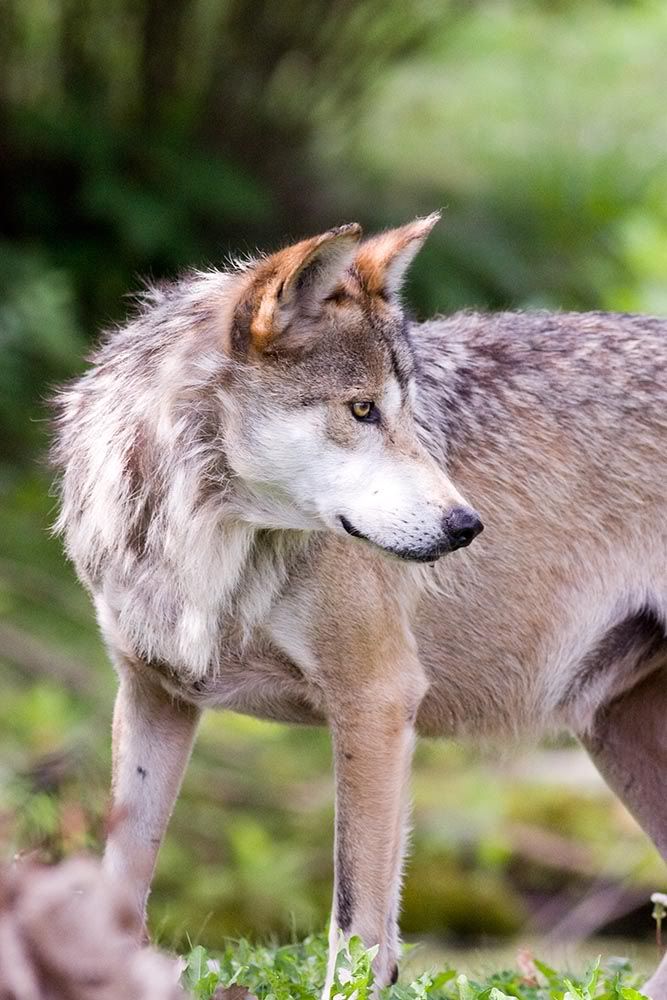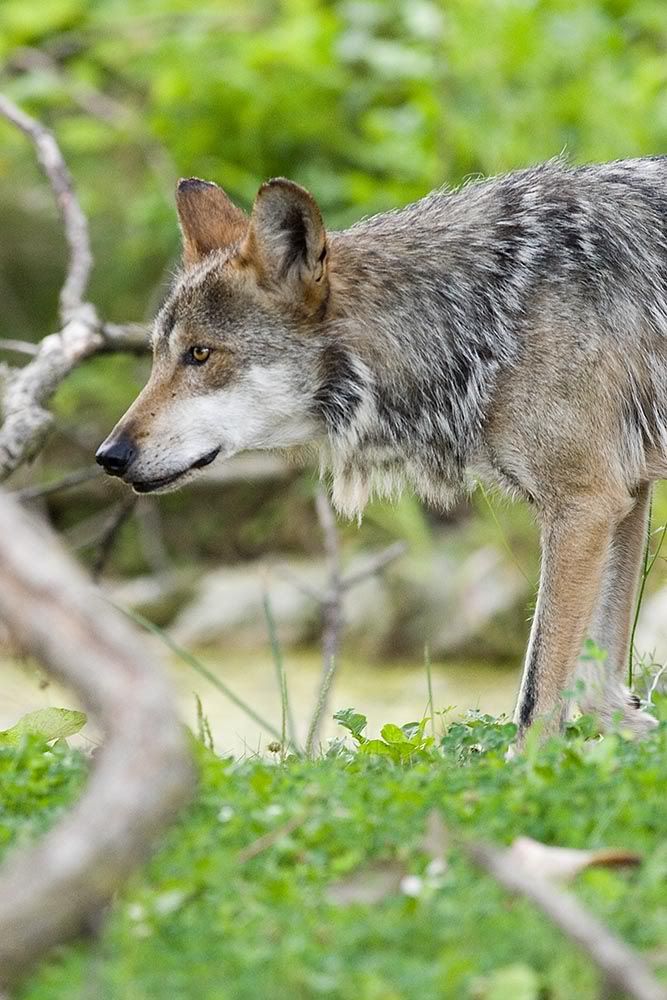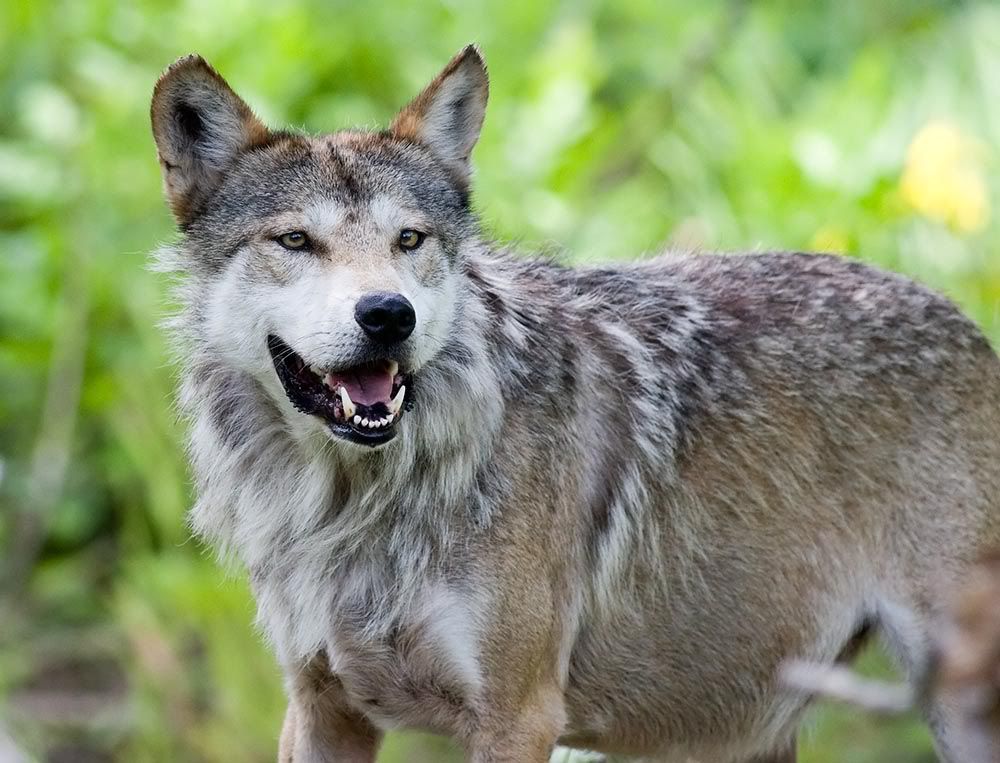Well, last week I finally did it. I found the lens I was looking for online and bought it. It's the Canon 400mm F5.6L, a lens that is strangely difficult to come by. Difficult enough that many are suggesting it looks like Canon is about to introduce a replacement and is trying to keep stocks of it low, so as not to have a bunch of an obsolete model sitting on the shelves. It appears that that's not really the case though, it's just.. strangely hard to come by. Like Canon is committed to a fixed manufacturing rate and in the summer more people want the lens and it gets rare. Just how rare? Well I was on the email waiting list at B&H. The last time it came into stock it was gone about 6 hours after I got my email notification that it was in.
I do not have it yet, however. It was originally estimated to get here Wednesday, but that was quickly moved back to Tuesday and based on the tracking info I think it'll get here on Monday. If it wasn't for the stupid weekend (how often do you hear that, right?) I'd have it by today, it's at the local distribution center just waiting for a weekday so it can be released.
So I wanted to give a little background on why I chose this lens and what I learned in the process. Because dpreview is always loaded with people asking whether they should get the 100-400 IS, the 400 F5.6, or sometimes the 300 F4 IS. I didn't even have to ask, it had been asked so many times before I just saw what answers had already been given.
First off, what about third party lenses? I know we have very positive reviews here of the Tamron 200-500 and of Tim's Sigma, of which I can never remember the focal length formula. Well.. call it what you will. Maybe I decided to become a Canon elitist snob. The situation is complicated, different reviews show different things, but the case seems to be that the Sigma zooms at least just aren't exceptionally sharp at maximum zoom. I've seen less info on the Tamron all around, I sort of irrationally excluded it based on the idea that third party wasn't as good. And I'll admit that.
And I wanted exceptional sharpness. Not because I'm a pixel peeper (although I am one), but because I'm looking to do wildlife photography, and when you're shooting wildlife the word is that you can never have enough focal length. If you look on the wildlife threads on dpreview you'll see people using the $7,500 (man, the price increase really hit that lens hard) Canon 600mm WITH a 1.4x teleconverter. I tell myself that that doesn't matter because I have a 1.6x crop factor body, but that's not entirely true and I know it.
But anyway, an exceptionally sharp lens means that I can afford to crop more heavily, up to the resolution limits of my camera sensor. Also it should take a teleconverter better. Also this lens has a good reputation for being extremely sharp wide open, useful considering that none of the options were particularly fast.
On the Canon side I had the 400mm prime and the 100-400 IS to choose from. The zoom is awfully tempting, with the flexibility of zoom plus stabilization. In terms of value for the dollar it sure seems to come out ahead, it's a LOT more complicated, it has a lot more glass and the extra complication of the IS system. Yet it doesn't cost that much more. Canon is clearly making people pay through the nose for prime quality.
But it has an unpleasant reputation for sample variability. After reading multiple reviews of it a trend became apparent. The really good reviews specified that they had to go through several copies to find a great one. Some have posted reviews claiming that their copy is nearly equal to or even better than the 400mm F5.6. But they fully acknowledge that those fantastic copies aren't common. Furthermore it has at least a slight reputation for degrading over time, something about the zoom mechanism wearing and the optics losing alignment or something.
I had two thoughts on the matter. First off I REALLY didn't want to play the game of going through copy after copy until I found the great one. And I'm fully aware that every time someone else does that the stores are stuck with the rejects and have to try to sell them again. Meaning all the more low quality copies for me to dodge. Secondly I already have the 70-200 F4. So my less extreme telephoto range is already covered with a comparatively lightweight high quality lens. And anyway, for wildlife I expected to be spending most of my time at 400mm anyway, so I might as well maximize my quality at that range. And get a lighter weight lens that focuses faster at the same time (I guess the simpler construction means that the lens elements can move faster). I'll miss the IS, but I think this was the right choice for me.
Everyone always says that this lens is a bit on the slow side, and they always say they want IS, and frankly for the price I think it should be either wider or IS equipped. I mean consider the 300mm F4 IS, it's both wider and IS equipped, but of course not as long. Going up to 400 means sacrificing both the extra stop of aperture and the IS for the same cost. But I'm well aware of those limitations, I know that I'll need either a lot of light, a tripod or monopod, or else higher ISOs. I considered the 300 early on, but frankly I knew it wouldn't be long enough and eventually gave it up.
On the other hand this lens is said to be the best bird in flight lens for Canon cameras. The reason being that IS is worthless there, you need high shutter speeds to freeze the movement of the bird anyway, and this lens focuses faster and is lighter and easier to handle.
Danielle, one of the better known bird photographers on the canon forums at Dpreview, swears by this lens. She claims it's superior to the much more expensive, wider and IS equipped teles because it's lighter and you can shoot it without a monopod (not so much for reducing shake but just because they're so heavy you can't hand hold them for long). She tells stories about shots she caught and other heavy lens users missed because she was more mobile.
To be honest birds aren't my main interest, but I expect them to be my main subject just because they're easier to come by. Living in Chicagoland you don't have a great deal of exciting wildlife at your disposal. I can shoot rabbits, squirrels, and deer... my great mammal hope is to get a coyote, but with them being primarily nocturnal that's going to be tough. Also I'm hoping to get a beaver, I know we have them, and supposedly we have an otter around here somewhere as well. On the other hand we have a pretty good bird selection, and I have a number of excellent birding sites available to me, from Fermilab (which is apparently considered quite a good site due to much of the surface of the accelerators being kept wild) to a bunch of forest preserves. Plenty of marsh type environments to draw in water birds (I often see herons flying overhead and have seen them land in my neighbor's decorative pond and eat their fish).. and we seem to have a number of red tailed hawks living right in my city.
So once this bad boy arrives at my doorstep and I spend some time testing it out and putting some serious miles on my feet walking the preserve trails I'll be back at this thread with a report on how it performs. And with pictures, of course.
I'm so excited. I just have to say that. I've been wanting to branch out into wildlife photography for ages now, 200mm has always been so limiting to me. I know 400 still won't feel like enough, but I know I'll be able to use it. I have a whole new field beckoning to me. It'll probably be frustrating at first, I'm going to have to learn how to be quiet and unobtrusive, normally I just tromp through the forest making as much noise as I wish. But it's still exciting.
I do not have it yet, however. It was originally estimated to get here Wednesday, but that was quickly moved back to Tuesday and based on the tracking info I think it'll get here on Monday. If it wasn't for the stupid weekend (how often do you hear that, right?) I'd have it by today, it's at the local distribution center just waiting for a weekday so it can be released.
So I wanted to give a little background on why I chose this lens and what I learned in the process. Because dpreview is always loaded with people asking whether they should get the 100-400 IS, the 400 F5.6, or sometimes the 300 F4 IS. I didn't even have to ask, it had been asked so many times before I just saw what answers had already been given.
First off, what about third party lenses? I know we have very positive reviews here of the Tamron 200-500 and of Tim's Sigma, of which I can never remember the focal length formula. Well.. call it what you will. Maybe I decided to become a Canon elitist snob. The situation is complicated, different reviews show different things, but the case seems to be that the Sigma zooms at least just aren't exceptionally sharp at maximum zoom. I've seen less info on the Tamron all around, I sort of irrationally excluded it based on the idea that third party wasn't as good. And I'll admit that.
And I wanted exceptional sharpness. Not because I'm a pixel peeper (although I am one), but because I'm looking to do wildlife photography, and when you're shooting wildlife the word is that you can never have enough focal length. If you look on the wildlife threads on dpreview you'll see people using the $7,500 (man, the price increase really hit that lens hard) Canon 600mm WITH a 1.4x teleconverter. I tell myself that that doesn't matter because I have a 1.6x crop factor body, but that's not entirely true and I know it.
But anyway, an exceptionally sharp lens means that I can afford to crop more heavily, up to the resolution limits of my camera sensor. Also it should take a teleconverter better. Also this lens has a good reputation for being extremely sharp wide open, useful considering that none of the options were particularly fast.
On the Canon side I had the 400mm prime and the 100-400 IS to choose from. The zoom is awfully tempting, with the flexibility of zoom plus stabilization. In terms of value for the dollar it sure seems to come out ahead, it's a LOT more complicated, it has a lot more glass and the extra complication of the IS system. Yet it doesn't cost that much more. Canon is clearly making people pay through the nose for prime quality.
But it has an unpleasant reputation for sample variability. After reading multiple reviews of it a trend became apparent. The really good reviews specified that they had to go through several copies to find a great one. Some have posted reviews claiming that their copy is nearly equal to or even better than the 400mm F5.6. But they fully acknowledge that those fantastic copies aren't common. Furthermore it has at least a slight reputation for degrading over time, something about the zoom mechanism wearing and the optics losing alignment or something.
I had two thoughts on the matter. First off I REALLY didn't want to play the game of going through copy after copy until I found the great one. And I'm fully aware that every time someone else does that the stores are stuck with the rejects and have to try to sell them again. Meaning all the more low quality copies for me to dodge. Secondly I already have the 70-200 F4. So my less extreme telephoto range is already covered with a comparatively lightweight high quality lens. And anyway, for wildlife I expected to be spending most of my time at 400mm anyway, so I might as well maximize my quality at that range. And get a lighter weight lens that focuses faster at the same time (I guess the simpler construction means that the lens elements can move faster). I'll miss the IS, but I think this was the right choice for me.
Everyone always says that this lens is a bit on the slow side, and they always say they want IS, and frankly for the price I think it should be either wider or IS equipped. I mean consider the 300mm F4 IS, it's both wider and IS equipped, but of course not as long. Going up to 400 means sacrificing both the extra stop of aperture and the IS for the same cost. But I'm well aware of those limitations, I know that I'll need either a lot of light, a tripod or monopod, or else higher ISOs. I considered the 300 early on, but frankly I knew it wouldn't be long enough and eventually gave it up.
On the other hand this lens is said to be the best bird in flight lens for Canon cameras. The reason being that IS is worthless there, you need high shutter speeds to freeze the movement of the bird anyway, and this lens focuses faster and is lighter and easier to handle.
Danielle, one of the better known bird photographers on the canon forums at Dpreview, swears by this lens. She claims it's superior to the much more expensive, wider and IS equipped teles because it's lighter and you can shoot it without a monopod (not so much for reducing shake but just because they're so heavy you can't hand hold them for long). She tells stories about shots she caught and other heavy lens users missed because she was more mobile.
To be honest birds aren't my main interest, but I expect them to be my main subject just because they're easier to come by. Living in Chicagoland you don't have a great deal of exciting wildlife at your disposal. I can shoot rabbits, squirrels, and deer... my great mammal hope is to get a coyote, but with them being primarily nocturnal that's going to be tough. Also I'm hoping to get a beaver, I know we have them, and supposedly we have an otter around here somewhere as well. On the other hand we have a pretty good bird selection, and I have a number of excellent birding sites available to me, from Fermilab (which is apparently considered quite a good site due to much of the surface of the accelerators being kept wild) to a bunch of forest preserves. Plenty of marsh type environments to draw in water birds (I often see herons flying overhead and have seen them land in my neighbor's decorative pond and eat their fish).. and we seem to have a number of red tailed hawks living right in my city.
So once this bad boy arrives at my doorstep and I spend some time testing it out and putting some serious miles on my feet walking the preserve trails I'll be back at this thread with a report on how it performs. And with pictures, of course.
I'm so excited. I just have to say that. I've been wanting to branch out into wildlife photography for ages now, 200mm has always been so limiting to me. I know 400 still won't feel like enough, but I know I'll be able to use it. I have a whole new field beckoning to me. It'll probably be frustrating at first, I'm going to have to learn how to be quiet and unobtrusive, normally I just tromp through the forest making as much noise as I wish. But it's still exciting.
Last edited by a moderator:



